This content was directly out of Wikepedia 1-13-09
Captain Alfred Dreyfus, a graduate of both École polytechnique and the École Supérieure de Guerre, was a promising young artillery officer. His high exit rankings from these elite institutions had led to a training position on the French Army's General Staff in January 1893. Alfred Dreyfus's family background was solidly upper middle class and rested on a successful family-owned textile manufacture in Mulhouse, a city in Alsace that is close to the German and Swiss borders. After the French defeat in the Franco-Prussian War of 1870-1871 and the annexation of Alsace by the German Empire, part of the Dreyfus family had chosen to retain its French nationality and moved permanently to Paris. Its younger members, including 12-year-old Alfred Dreyfus jr. and his brother Mathieu Dreyfus, grew up there.
Accusations and arrest
In October 1894, shortly after he had begun his training assignment in the "3ème Bureau" of the General Staff, Captain Dreyfus was arrested and charged with passing military secrets to the German embassy in Paris.
In December 1894, a military tribunal convicted Dreyfus of treason and sentenced him to life imprisonment in solitary confinement on Devil's Island, a prison island off the coast of French Guiana.
Captain Dreyfus's conviction was based on a handwritten list (the bordereau) offering Germans access to secret French weaponry. Marie Bastian (née Caudron), a French cleaning woman and spy in the employ of French military counter-intelligence (the so-called "Section de Statistique" led by a Lt Col Sandherr), retrieved the bordereau list from the wastepaper basket of the German military attaché in Paris, Maximilian Von Schwartzkoppen.
The "bordereau" list appeared to implicate an artillery officer since it proposed access to technical information concerning a French artillery weapon, the Modèle 1890 120mm Baquet howitzer. Dreyfus came under suspicion because of his artillery training, his Alsatian origins, his yearly trips to his then-German home town of Mülhausen (now the French town of Mulhouse in Alsace) to visit his ailing father, and because he was a Jew (a negative connotation for the anti-semitic Sandherr and some high-level officers at the "4ème Bureau" of the General Staff). Above all, the handwriting on the bordereau appeared to resemble that of Dreyfus.
By the time the High Command realized it could not find substantial evidence against Dreyfus (apart from the "bordereau", which forensic experts could not agree was in Dreyfus's handwriting), it had become impossible to withdraw the prosecution without a scandal that would bring down the highest levels of the French Army.[3] The obstinacy of the Army's General Staff in pressing unfounded charges against Captain Dreyfus precipitated criminal activities by French military counter-intelligence officers. Officers fabricated false documents designed to incriminate Dreyfus.
The protracted cover-up of illegal activities by highly placed members of the Army's General Staff became the heart of the Dreyfus Affair. While anti-Semitic overtones contributed, Dreyfus, although generally praised by his superiors, was not popular with some colleagues because of his aloof personality and comparatively wealthy background. His father had died in 1893 and had left him a small fortune. Captain Dreyfus's personal income, in addition to that of his wife, exceeded that of a general officer in the French Army (Doise, 1994).
Judicial errors and obstruction of justice
The subsequent court-martial was notable for its numerous errors of procedure. The defense was not made aware of a secret dossier that the prosecution had provided to the military judges (Bredin, 1986). Withholding this dossier from the defense was illegal under French law. The French military historian Jean Doise, a retired officer in the French Army's General Staff, has published evidence (Doise, 1994) that led him to propose the conclusion that Dreyfus may have been used, at least initially, as a decoy by French military counter-intelligence (the "Section de Statistique" led by Lt Colonel Sandherr). According to Doise,[3] the intense prosecution of Alfred Dreyfus may have been initially designed to mislead German espionage into believing that it had stumbled onto highly sensitive artillery information.
Lt Col Georges Picquart demonstrated as early as 1896, that the partially destroyed bordereau used to incriminate Alfred Dreyfus in reality had been handwritten and delivered to the German Embassy by a French infantry officer of Hungarian descent, Major Ferdinand Walsin Esterhazy. Written above the list on the bordereau was a promise to deliver to the German Military Attaché technical information concerning the oleo-pneumatic recoil mechanism of a newly developed French howitzer, the 120mm Baquet. Presumably, Esterhazy either hoped to extract money from the German Attaché or had, as proposed by Jean Doise (1984), planted a deception into German hands to throw them off the Canon de 75 modèle 1897 field gun project. The new French 75 prototype and its advanced oleo-pneumatic recoil mechanism were secretly in concurrent development, while the 120mm Baquet had been earmarked for discontinuation.
If Esterhazy was a double-agent, it would explain why he, although unmistakably identified by Lt Col Picquart as the author of the "bordereau", was acquitted by French military Justice in January 1898 and allowed to retire in England with a pension. Moreover, lieutenant Walsin-Esterhazy served in 1881 and 1882 as a German translator on the staff of the "Section de Statistique", at the same time and in the same office as Major Joseph Hubert Henry, the officer later to be caught forging evidence against Dreyfus. These career overlaps are well documented and took place during the early part of Esterhazy's career, long before the Dreyfus Affair.[4] This underlines that the two officers worked in the same French military counter-espionage group twelve years before the Dreyfus Affair and knew each other well.
The theory that Esterhazy wasn't a man who sold military secrets to the Germans to cover debts and who sought revenge against France for denying him promotions and appointments is problematic. If Esterhazy was a double-agent working for Sandherr at the time that the bordereau was written, Sandherr's reaction to its discovery appears illogical. Esterhazy's sheltering from being convicted in January 1898 was likely not to protect a double agent, but rather to justify the original sentencing pronounced against Dreyfus in December 1894.
Revelations by professional French Army historians further confirm conclusions of Lt Col Georges Picquart in 1896, that the criminal machinations devised by Lt Col Sandherr and his group (notably Major Hubert-Joseph Henry, Captain Lauth, and archivist Gribelin) at the "Section de Statistique". Because counter-intelligence officers were loosely supervised and distinct from the regular military intelligence section (the 2ème bureau ) at the French War Ministry, they were able to forge evidence against Dreyfus (the "faux Henry") and pervert the course of justice.[5] This occurred because Lt Col Sandherr reported directly and secretly to the office of the politically appointed War Minister, General Auguste Mercier, who occupied this key position until 1896. General Auguste Mercier was responsible for initiating the events and pressing the subsequent cover-up of the miscarriage of justice.[6] It is speculated but unprovable that General Deloye, who directed French Artillery and supervised the French 75's secret development, initiated the conspiracy.[7]
Dreyfus cashiered in a public ceremony.
In 1894, Alfred Dreyfus was tried on charges of espionage and found guilty. He was sentenced to life in prison on Devil's Island in French Guiana where he was to endure debilitating solitary confinement in a small hut for nearly five years. Before his deportation to Guiana, he underwent a formal degradation ceremony in the École Militaire in Paris where he was publicly cashiered: his rank marks and buttons were ripped off his uniform and his sabre was broken.[8]
In June 1899, the case was reopened following the uncovering of exonerating evidence and denial of due process during the initial court-martial. France's Court of Cassation quashed his conviction and ordered a new court-martial. Despite the new evidence presented at his second military trial, Dreyfus was re-convicted in September 1899 and sentenced to 10 years in prison. He was subsequently pardoned by President Émile Loubet and freed, but would not be formally exonerated until 12 July 1906, when the Court of Cassation annulled his second conviction.
In July 1906, Dreyfus was formally reinstated as a major in the army and made a Knight of the Légion d'Honneur. He retired in July 1907 until he was recalled to active duty in August 1914, at the age of 55.
During World War I, Dreyfus served behind the lines of the Western Front as a Lieutenant-Colonel of Artillery, and performed front line duties in 1917, notably at Verdun and on the Chemin des Dames.
In July 1919, Alfred Dreyfus was raised to the rank of Officer of the Légion d'Honneur. This elevation constituted official recognition that he served his country in time of war with distinction and well beyond the normal retirement age. However, his personal life and that of his family, not to speak of his military career, had been deeply damaged by the baseless accusations made against him since 1894.
Subscribe to:
Post Comments (Atom)














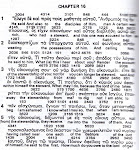

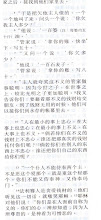














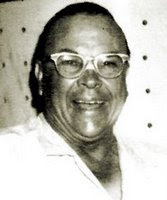









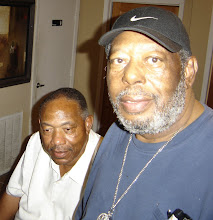













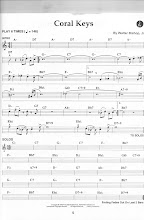

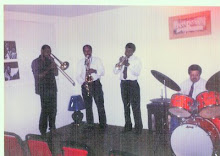






No comments:
Post a Comment